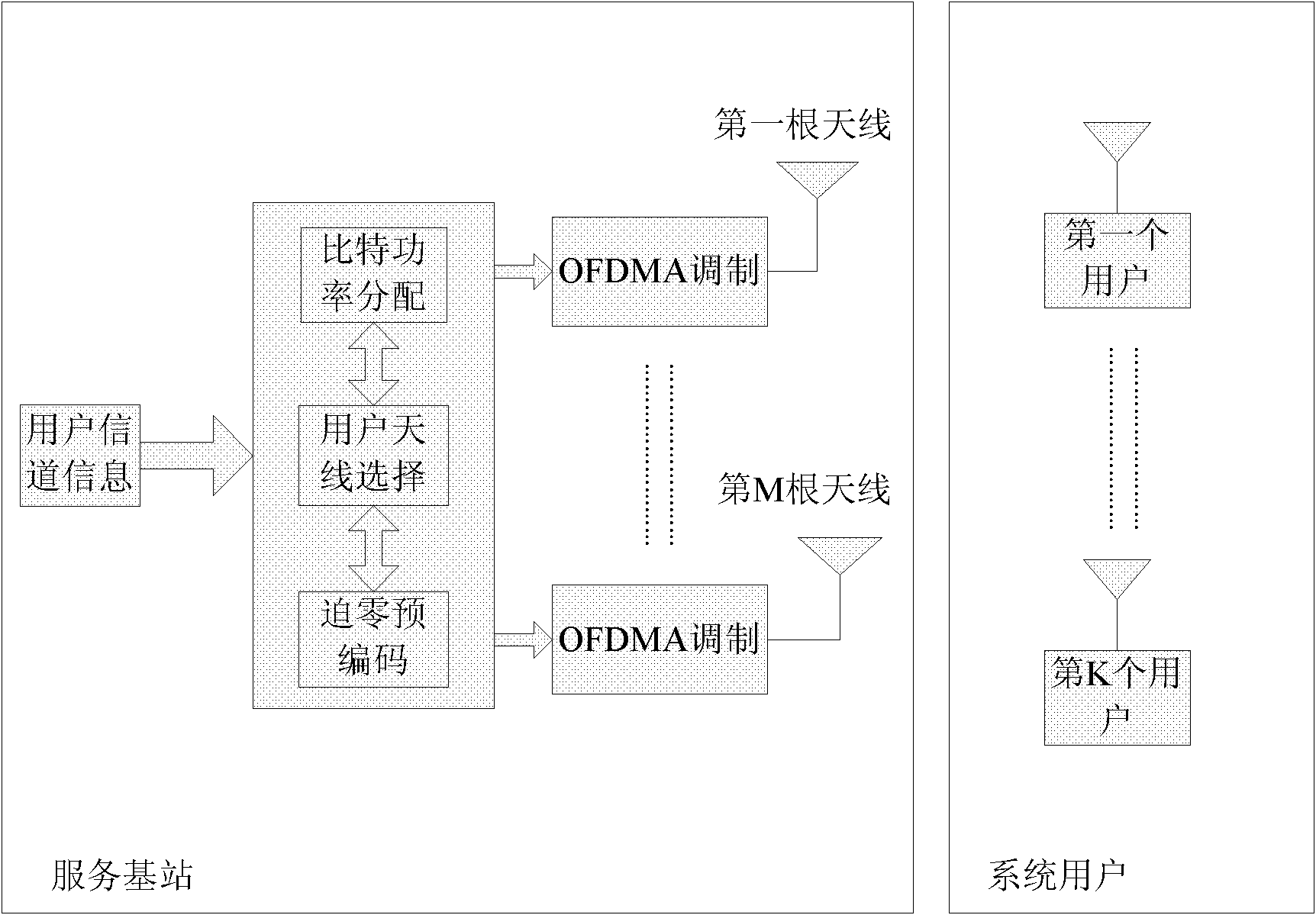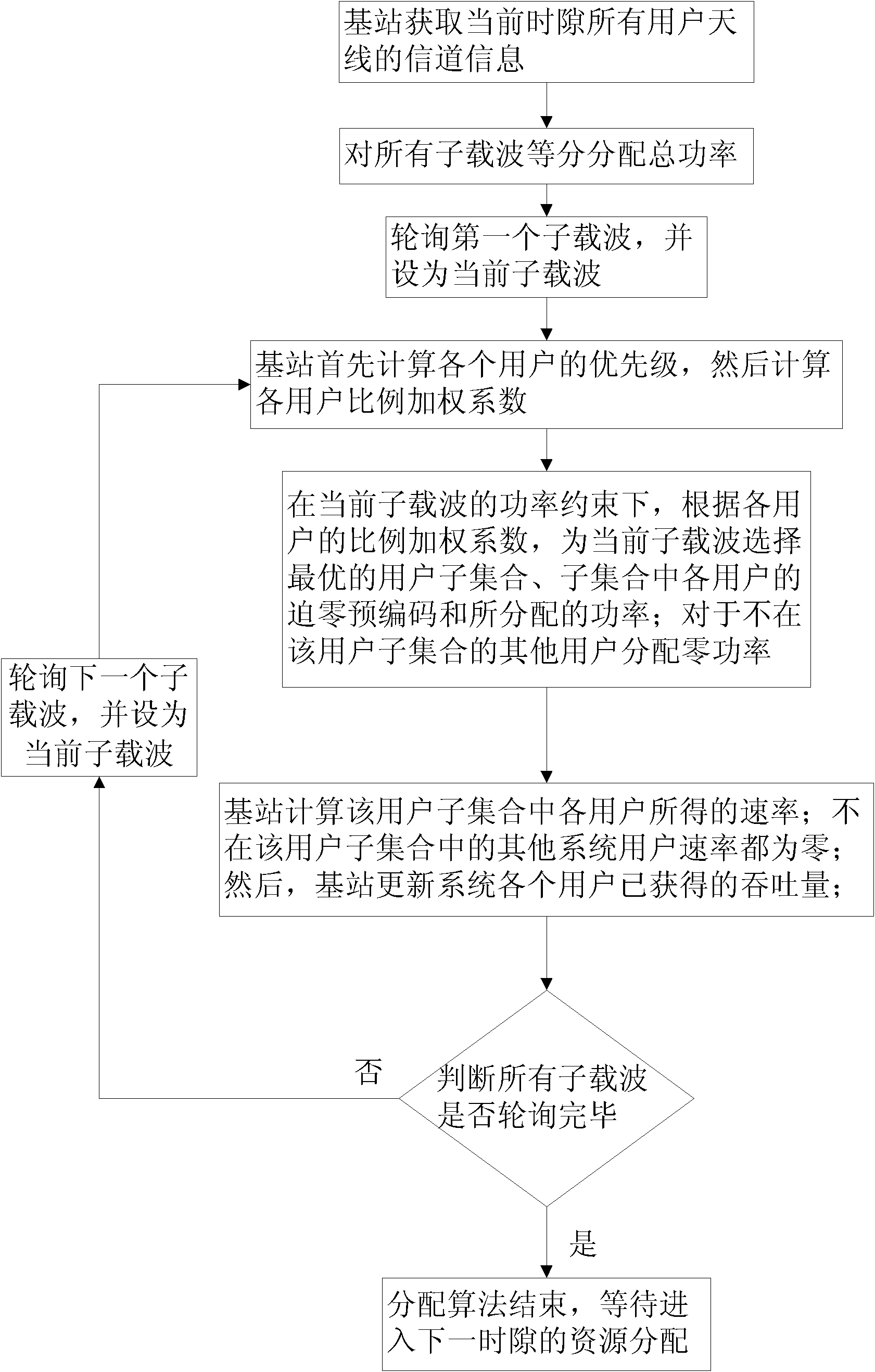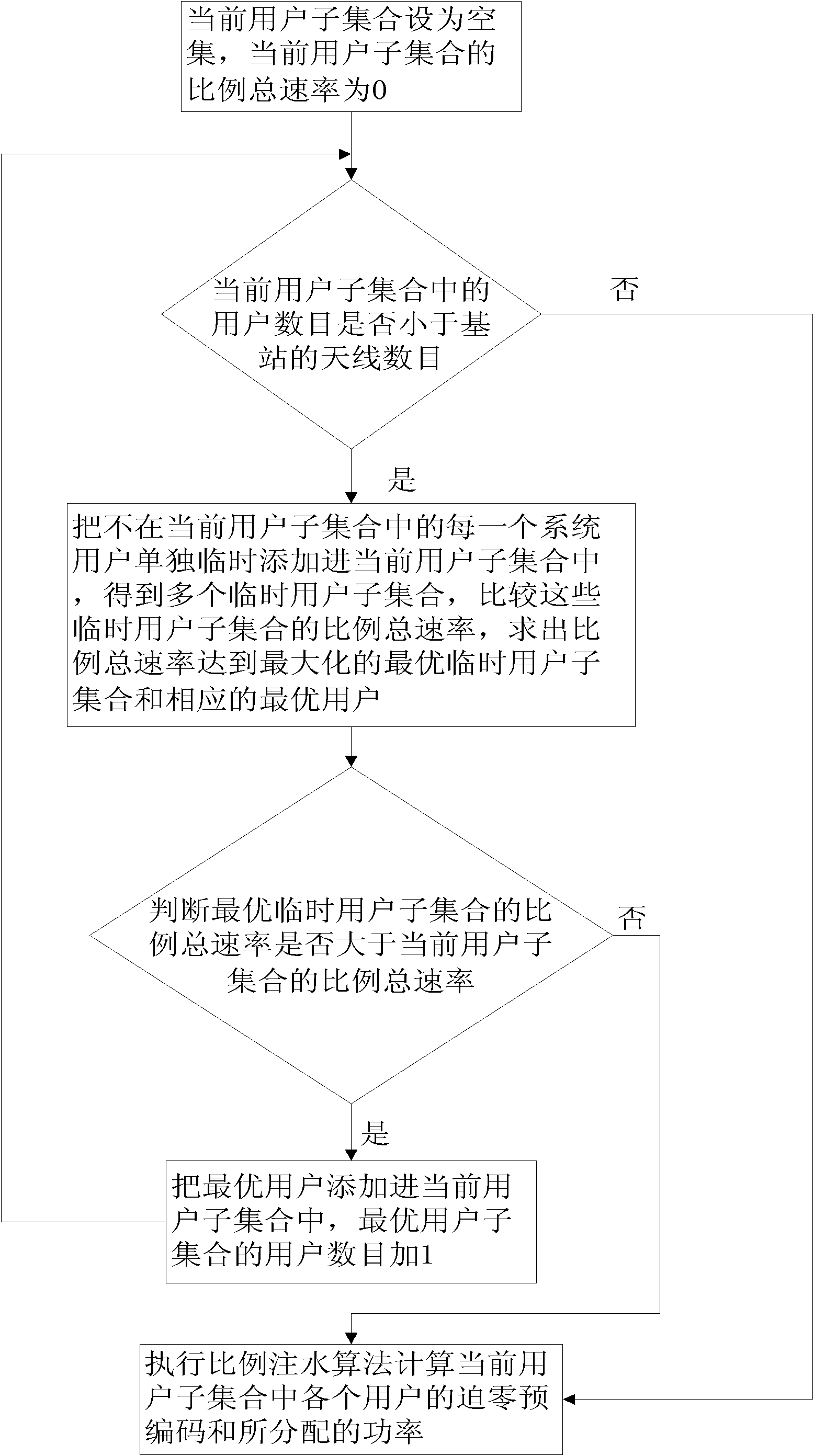Resource allocation method of a multi-user multi-input single-output-orthogonal frequency division multiple access system
An orthogonal frequency division multiple access and resource allocation technology, applied in multi-frequency code systems, electrical components, wireless communications, etc., can solve the problems of system throughput decline and neglect of system throughput, and achieve the effect of ensuring fairness
- Summary
- Abstract
- Description
- Claims
- Application Information
AI Technical Summary
Problems solved by technology
Method used
Image
Examples
Embodiment 1
[0039] Such as figure 1 The shown multi-user MISO-OFDMA system model: the base station installs M antennas, there are K users in the system, and each user installs an antenna. Generally, the number of antennas of the base station is much smaller than the number of system users (Mk,n,t =[h k,n,1 (t)h k,n,2 (t)Λh k,n,M (t)], where h k,n,1 (t)h k,n,2 (t)Λh k,n,M (t) respectively represent the channel gain from the antenna of the kth user to each antenna of the base station.
[0040] The total power constraint of the base station is set to P tot , the present invention takes the total power P tot and N subcarriers are reasonably allocated to K users of the system to achieve the purpose of not only ensuring the throughput of the system but also ensuring the fairness among users.
[0041] The resource allocation method of the multi-user multiple-input single-output-OFDMA system of the present invention is as follows: figure 2 Shown:
[0042] 1), the base station obtains t...
PUM
 Login to View More
Login to View More Abstract
Description
Claims
Application Information
 Login to View More
Login to View More - R&D
- Intellectual Property
- Life Sciences
- Materials
- Tech Scout
- Unparalleled Data Quality
- Higher Quality Content
- 60% Fewer Hallucinations
Browse by: Latest US Patents, China's latest patents, Technical Efficacy Thesaurus, Application Domain, Technology Topic, Popular Technical Reports.
© 2025 PatSnap. All rights reserved.Legal|Privacy policy|Modern Slavery Act Transparency Statement|Sitemap|About US| Contact US: help@patsnap.com



